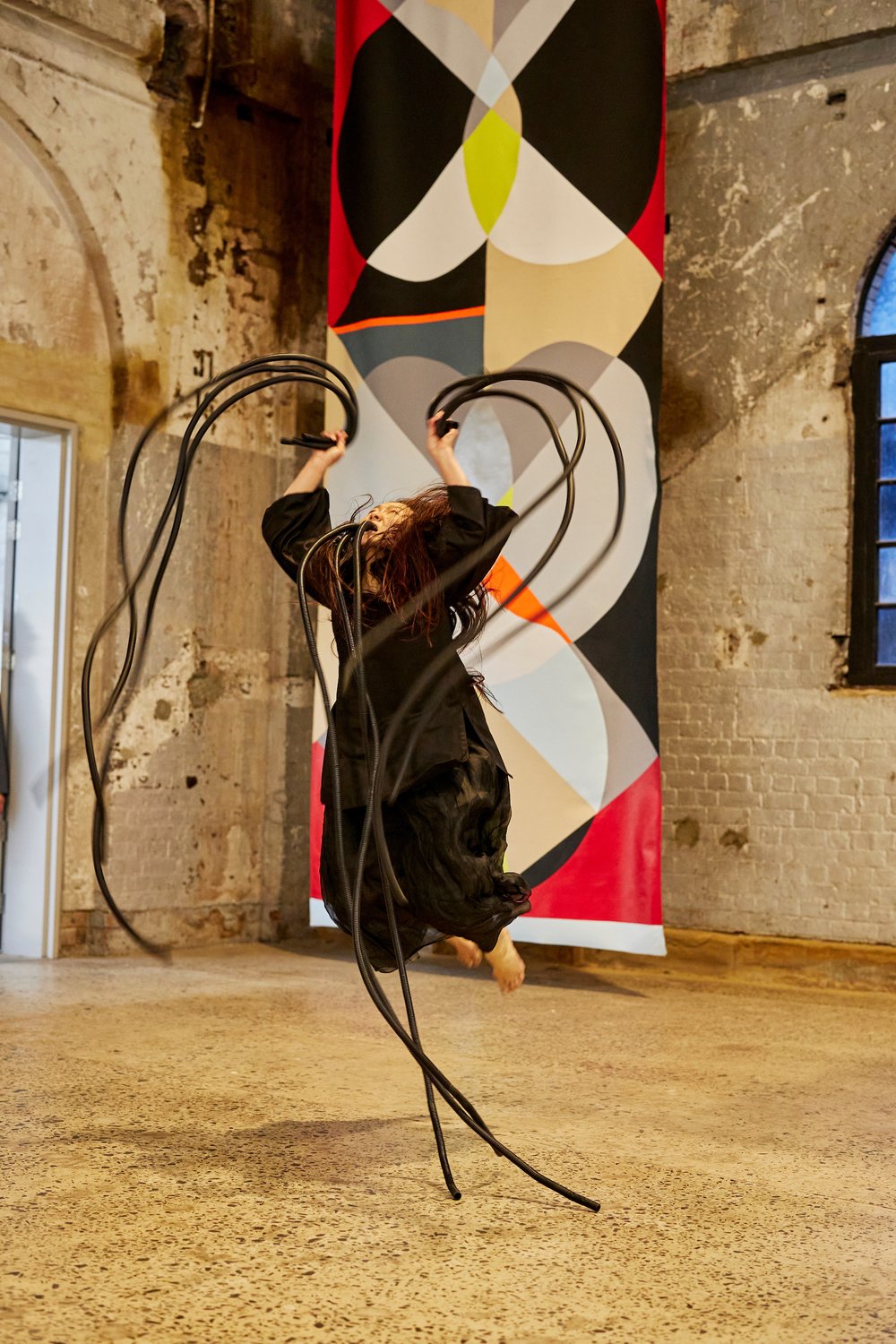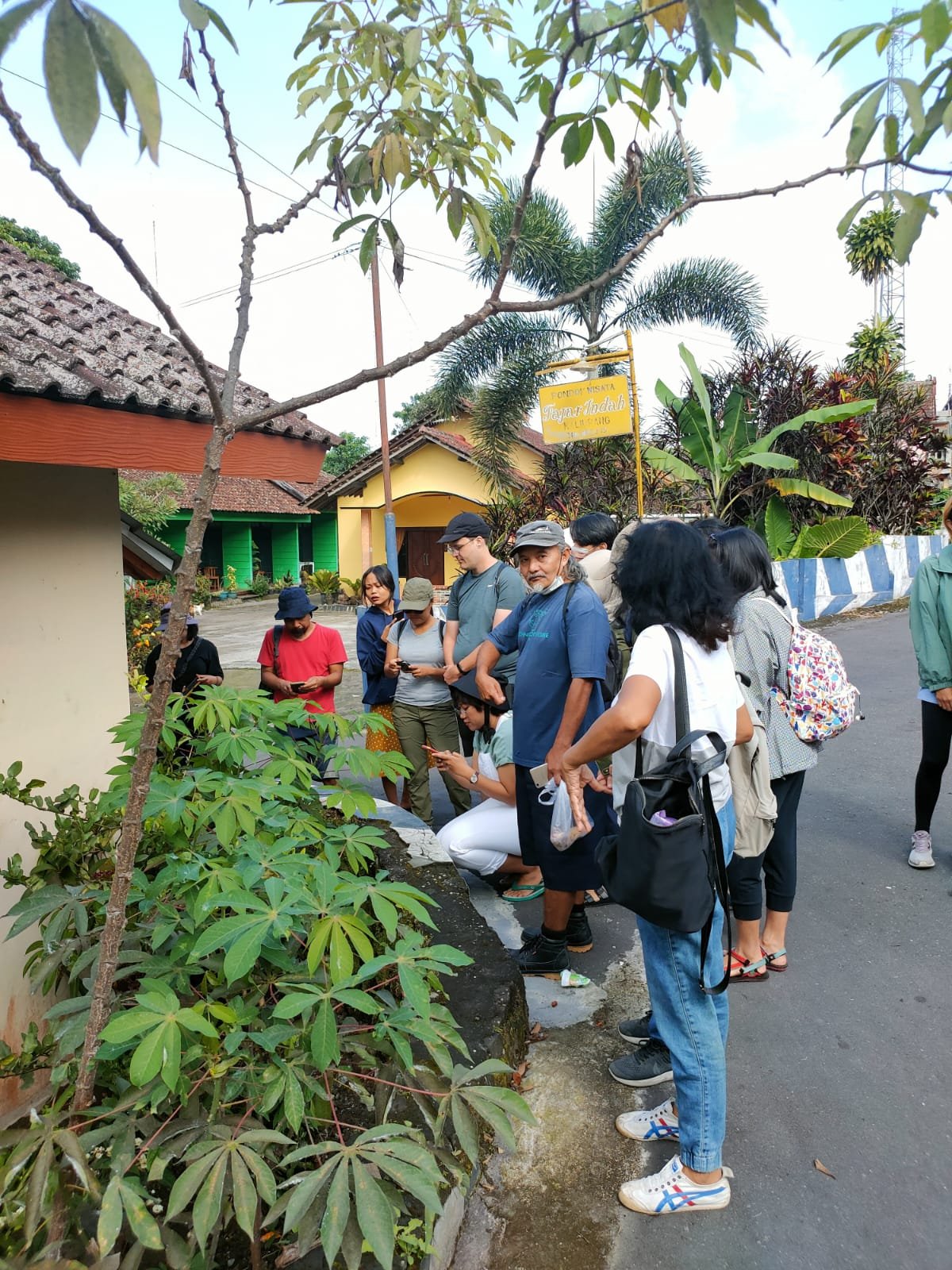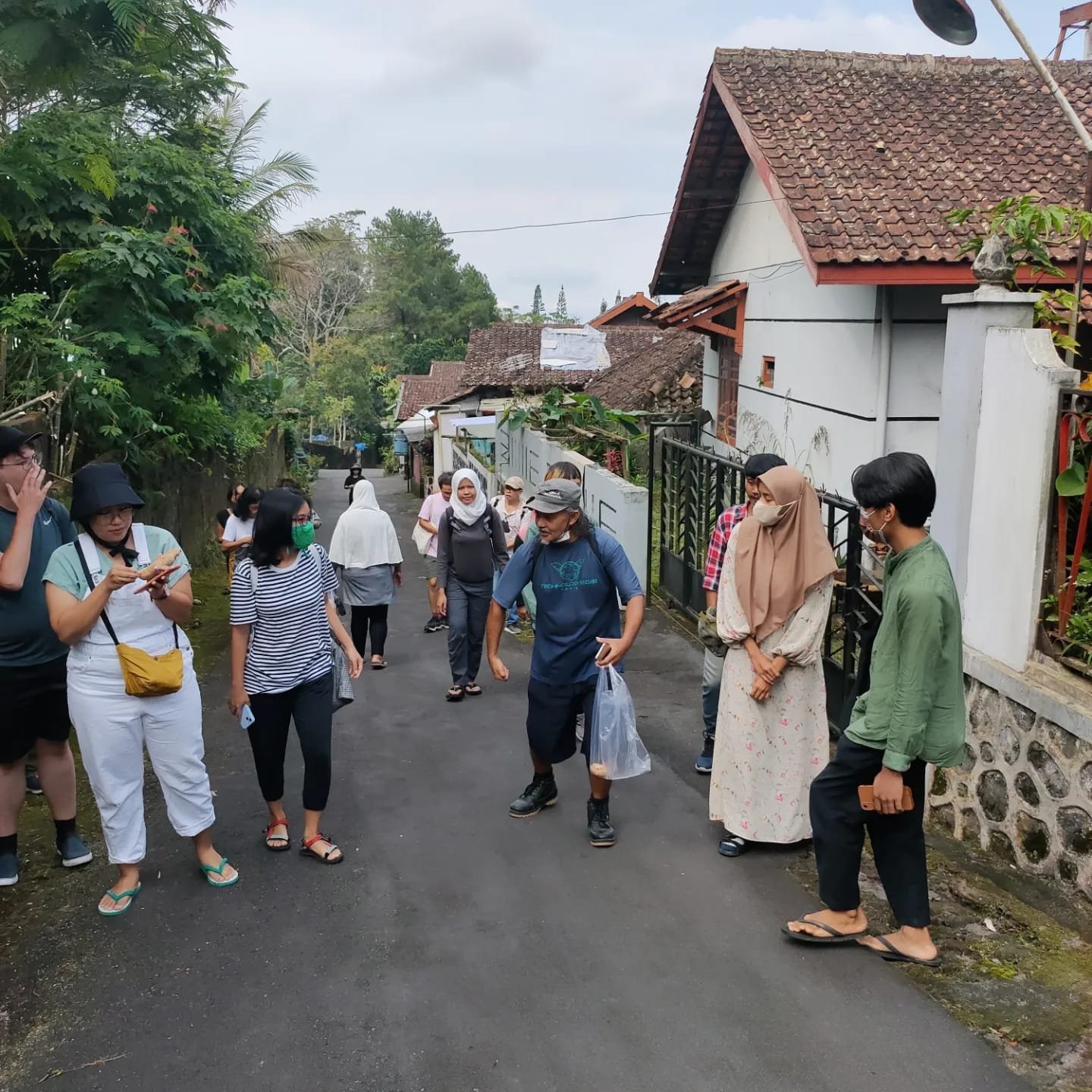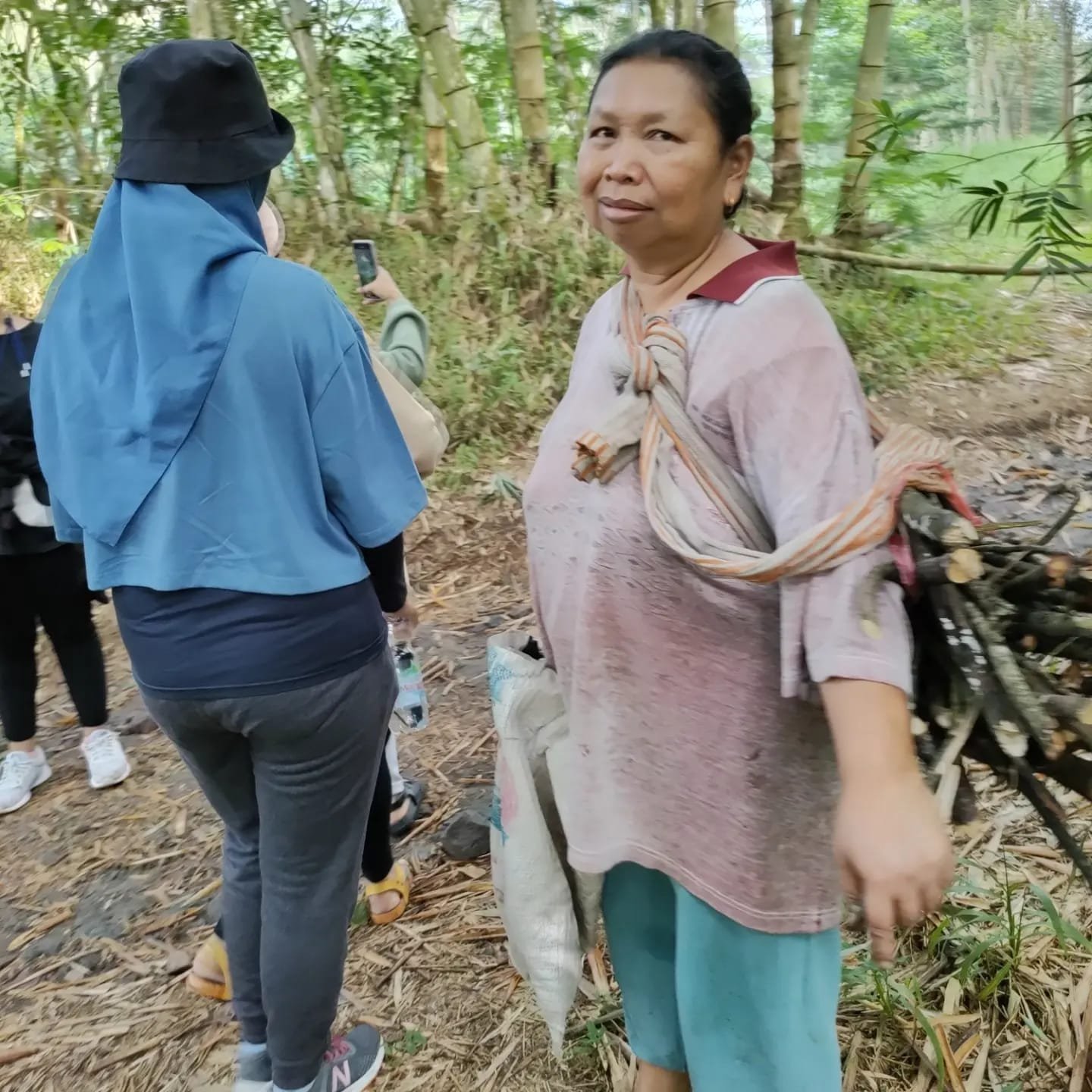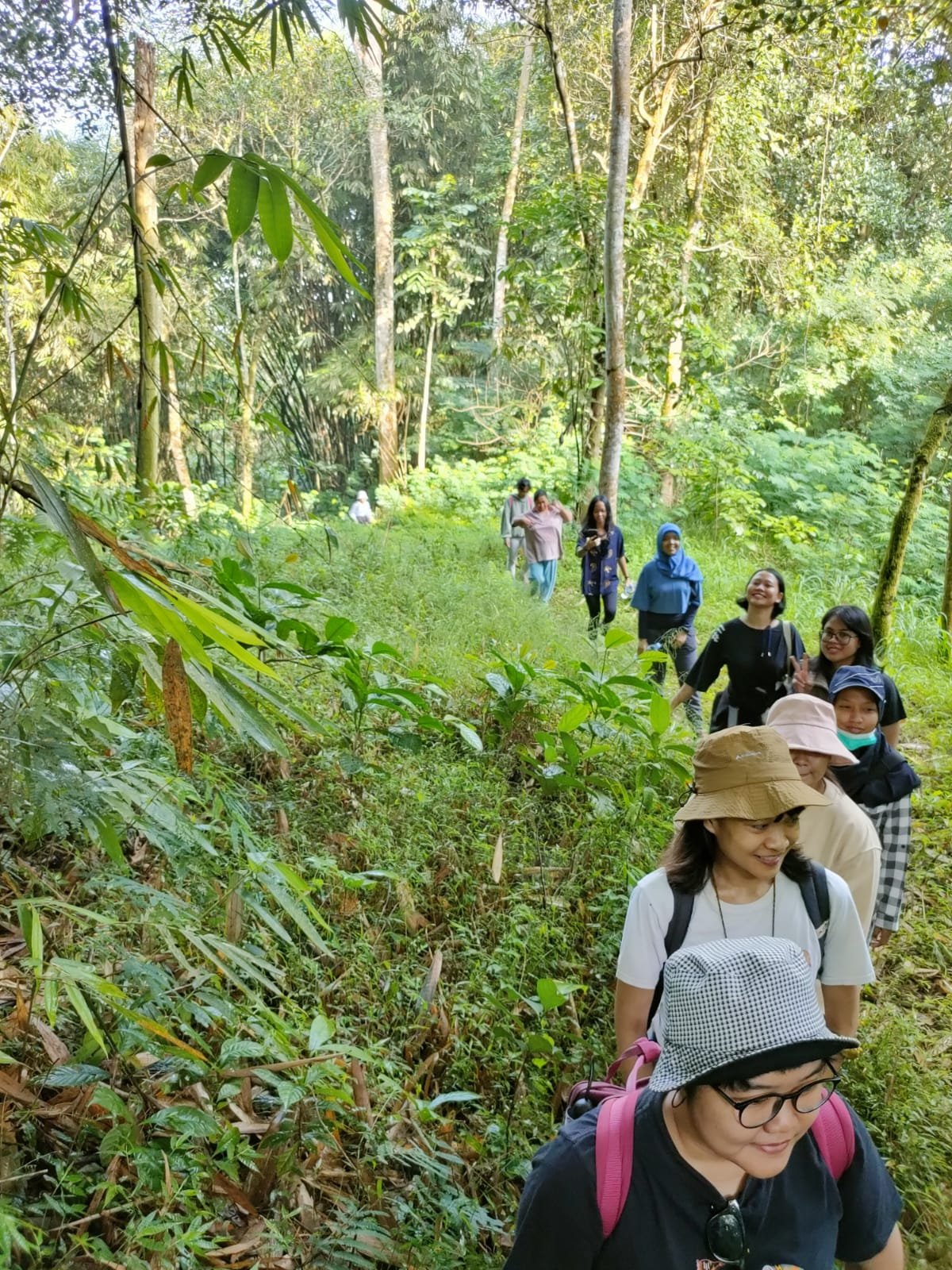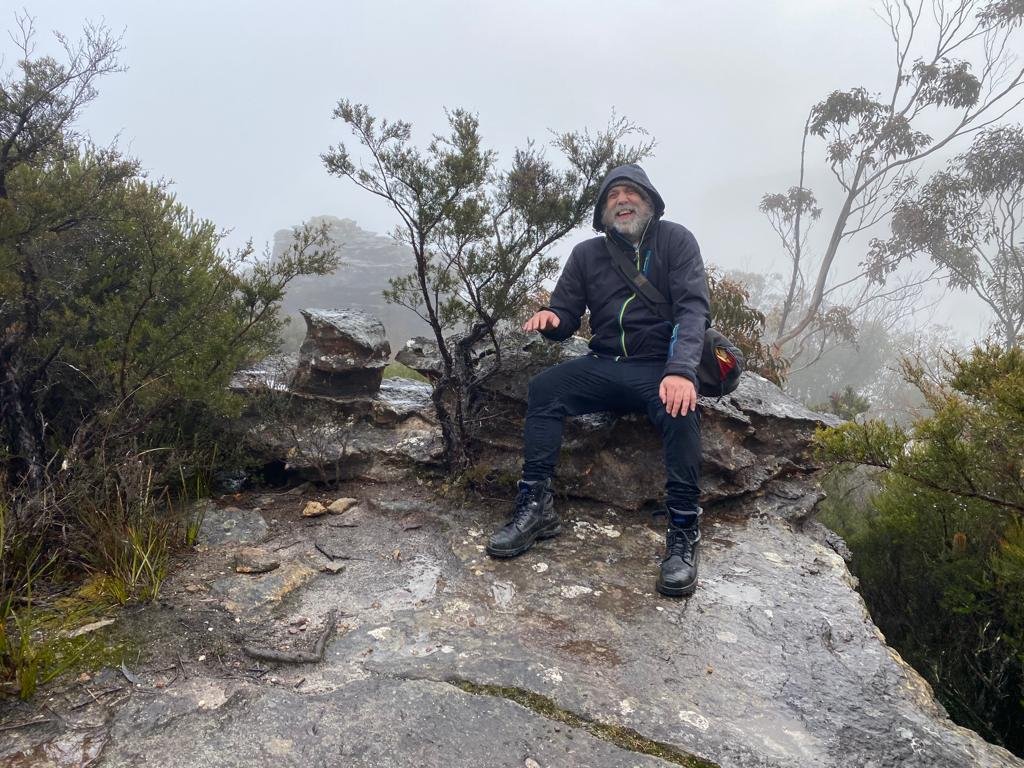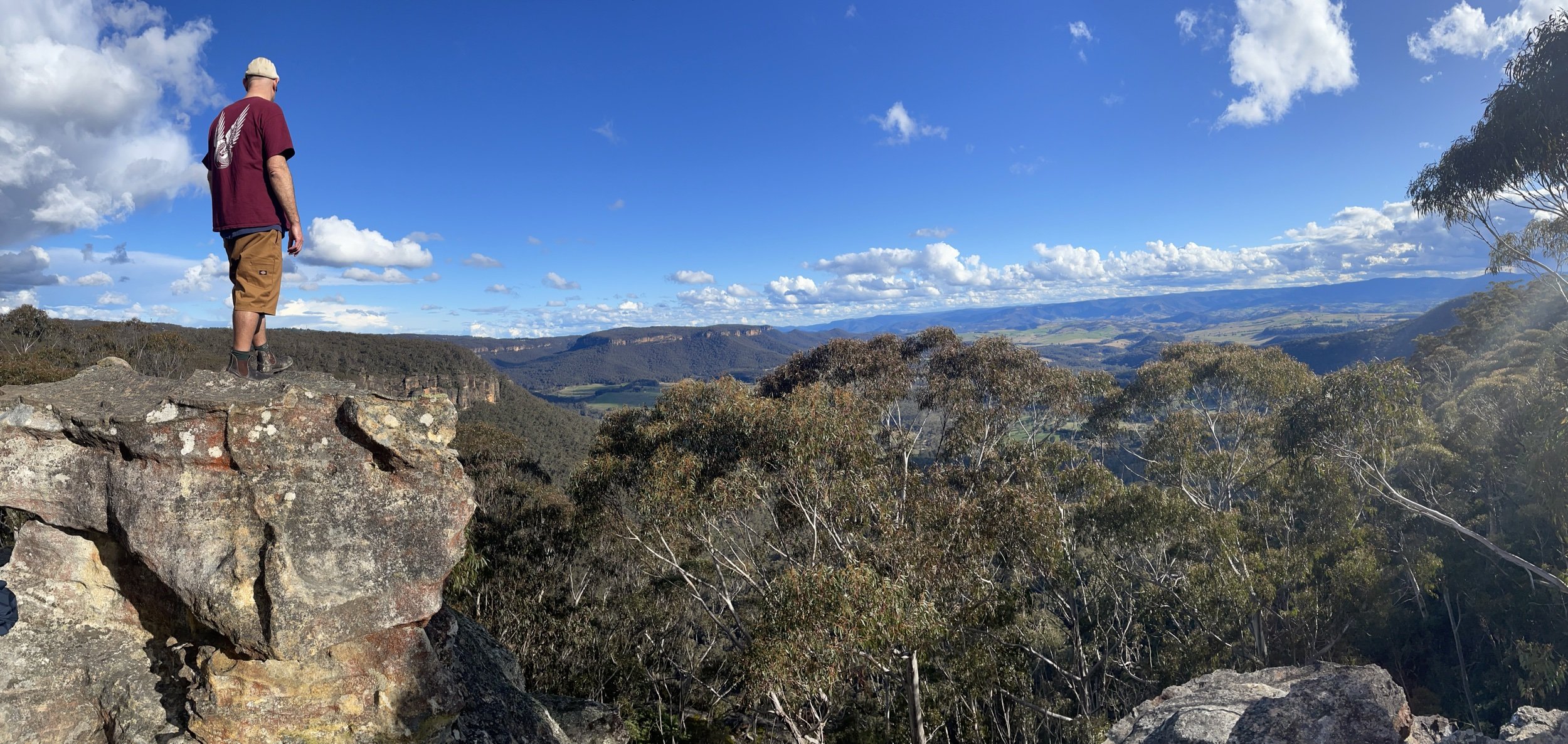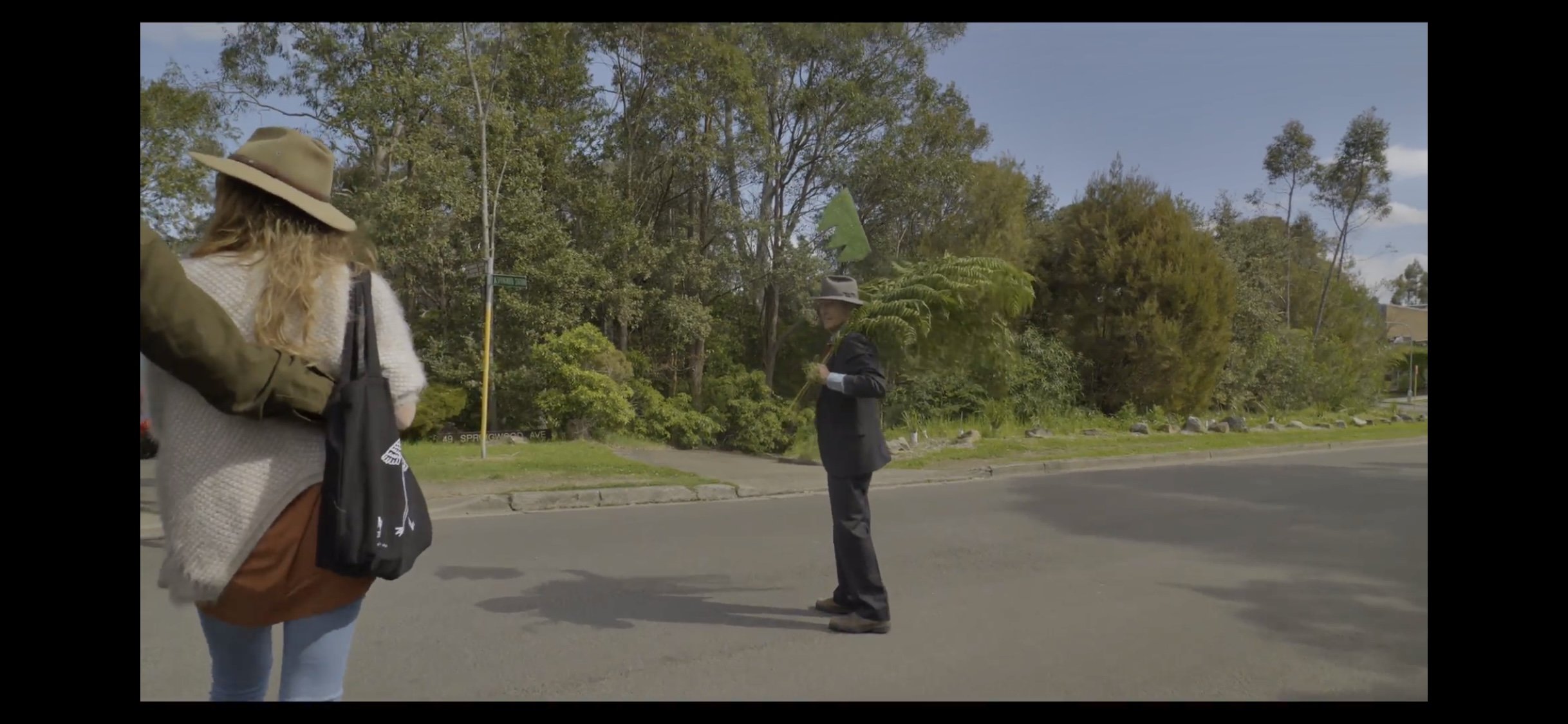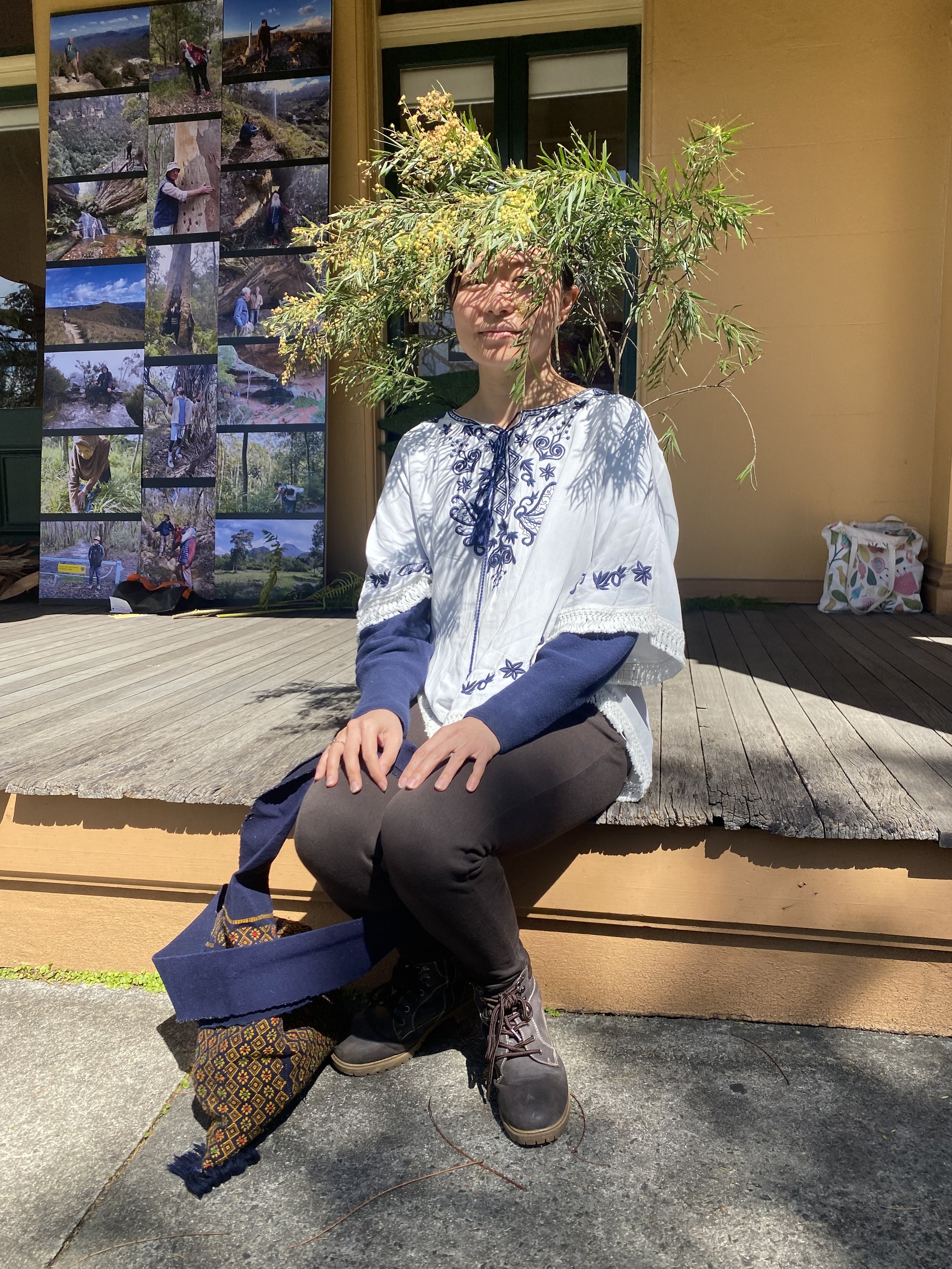Memory Walks - What Persists
A Critical Path Social Choreographic Research 2022
Blue Mountains Principal Artists, NSW Australia: Alan Schacher + WeiZen Ho
Blue Mountains Social Researcher, NSW Australia: Phillip Mar
Yogyakarta Collaborating Artist, Indonesia: Mella Jaarsma
Yogyakarta Social Researcher and Curator, Indonesia: Mira Asriningtyas
Background
What Persists is about the investigation of place and public space, and how place can be engendered through community. On a more poetic level, it is the search for what is rememberable, and endures beyond the intervention of time…
The research process focuses on ways of devising a social choreography based on symbols that persist in the individual’s memory, that kindles a “recognition” of essences that are timeless, intersecting the diverse beliefs that are held in the community, secular or otherwise. By drawing on elements of cultural inheritance and the symbols that link us to ancestral themes, the intention is to enrich the places where people dwell by searching for the body that extends beyond their skins and into the places they inhabit.
Some Thoughts
We are concerned about the disappearance of ritual events in our lives and seek what is still remember-able and remarkable in our societal and domestic spaces, bringing people, place and memory together.
The act of symbol-making is one method for facilitating the process of place-making and its associated rituals. We perceive rituals, no matter how temporary, as symbolic practices employed to shift our perception and experience of time, bringing people together to create an alliance, a wholeness, a community.
In engaging with communities in the Blue Mountains and in Kaliurang (a mountainous district near Yogyakarta, on the southern base of Mt Merapi volcano), we asking them to identify meaningful images, materials, tasks and other symbols of significance. Symbolism in this sense is a medium of community, where symbolisation and ritualisation condition one another.
Walking as a method
We use the device of ‘going for a walk’ as a potent forum for exchange. We believe that walking activates the body memory, and will invite community members to guide us through their environment. In the ensuing conversations we will draw out thematics towards the choreography of a transformational social procession specific to that location.
Philosophers of walking practices such as Rousseau, Gros, Debord and indeed the Aboriginal walkabout lead us to consider how walking can constitute a communal performance. As a narrative structure many processional rituals, funeral marches, wedding parades, protests, mardi gras events and other processional traditions are based in collective walking.
Many, many questions
What is place?
Does place generate the desire for community and can place have its own sentience?
Does desire reside only in the human, or also in the spaces and places in which they dwell?
What is the relationship between community and place and what does it mean to activate a temporary place-making process?
Does place hold events as if in ‘its’ memory?
Places cannot be located without examining the specific and singular ways in which people engage with and give meaning to them. Places come into being with the generation of specific meanings acquired through experience, familiarity, inhabitance, and emotional investment.
What is community?
Communities are constellations under divided skies. Here we are under southern skies but where do people turn towards when they think of home?
What would it mean to create a temporary community in the shared practice of walking?
We wonder about the invisible substance that holds a community together, that identifies its neighborhoods and localities, its re-membrances and re-collections.
What are the biological, geographical and immaterial boundaries, limits and demarcations of a community?
And as we move within them, how does one locality ‘bleed’ into another, or through it, and what exchanges and crossovers occur at and beyond those points of exchange and intersection?
How can we imagine and realise structures for participatory processional iterations of place which incorporate narratives, symbols, sounds and objects introduced by community members?
How will we arrange to meet community representatives?
We are interested in communities which incorporate socially visible diasporic or migrant groups, perhaps all people are migrants and diasporics? What if their movements and patterns of return (even if imaginative or in memory only) is also a form of movement?
Memory Walks callout to residents of the Blue Mountains, and Dicari: Teman jalan-jalan callout to residents in Kaliurang village, north of Yogyakarta.
One-on-one walks, Kaliurang, a village on the southern base of the volcanic mountain Mt. Merapi, Indonesia
21 Feb 2022Meanwhile in Kaliurang, Mira had sent the callout invitation to her WhatsApp community group. They’ve had three responses, and Mella has had her first walker, Pak Tarman.
5 March 2022
Mella’s second walker…
About Memory Walks Callout
WeiZen Ho, Alan Schacher and Phillip Mar have initiated a community engagement and project that is very much grounded in the Blue Mountains, where they live. As part of their 2022 Critical Path Research Residency titled What Persists, they are inviting local residents to share a favourite walking route in nature or town. It could be around a few local streets, a bushwalk, or perhaps a walk further away where they grew up or used to live. Somewhere that has meaning for them and has significance in their lives.
Talking with people about the significance of this walk will be the beginning of investigations of place and public space, and how place can be engendered through community. Further discussions and working groups will focus on ways of devising a social choreography based on symbols that persist in the individual’s memory.
Memory walks will explore walking in the different ways that it activates body memories. In walking we may trace steps between the other places and times of our lives. These places and times might include exile or emigration or other kinds of journeys or transformations. We aim to reveal what persists in remembrances of places and how they mesh with places and communities in the Blue Mountains. Walking will be our research method and development process, a way to get to know Blue Mountains people better and the journeys they have made.
We’d like to gather a small group willing to join in discussing, reminiscing, walking, and then making together a kind of ceremony or procession as a further act of collective place-making. This might include artefacts developed in a workshop process.
In parallel the team will be working in exchange with collaborators in Indonesia :
Mella Jaarsma, a Dutch artist who has been resident in Indonesia since 1984 lives in Jogjakarta.
Mira Asriningtyas, a curator & researcher, lives in the the mountainous district of Kaliurang, near Mt. Merapi volcano. This is the sociocultural geography in which a similar callout research phase will take place.
One-on-one walks, Blue Mountains NSW Australia
March 2022We were very excited to begin our research with our first few walkers. Katrina responded through the Blue Mountains City of Arts online e-newsletter, and Brad through a Facebook group he manages, Mountain Folk. WeiWei and her husband, Thomas used to own and run an amazing Malaysian Penang restaurant with a patisserie front.
July-August 2022
A series of walks with the same person is necessary because there is so much history to unpack, and time is necessary to build trust and deeper relationships.
Overview of Methodology
To imagine and realise structures for participatory processional iterations of place which incorporate narratives, symbols, sounds and objects introduced by community members.
Walking as a research method as well as a choreographic element.
The processional organisation of bodies will be used as part of new choreographic dimensions.
Cultural mapping explores participant’s historical and contemporary relationships with their local environments. It entails walking in the places that are considered important, noticing and documenting social, historical and ecological markers and references to enable an articulation of the cultural histories and embeddedness of place.
We are also interested in the emotional aspects of recollections when memory pathways are activated through the physical act of walking and sharing on a route of significance. Are there ways of regenerating emotional spaces along the social choreographic trajectories we are devising for the processional outcome?
Public callouts were made through community Radio Blue Mountains 89.1FM, The Blue Mountains Cultural Centre, Facebook Groups and artist collectives and organisations like MAP BM and BigCi. In the longer term, we would like to approach key community figures who are associated with the Darug, Gundungurra, Tibetan, Thai, Japanese, Singaporean, Hong Kong residents. We will also be reaching out to residents in aged care homes.
Participants share their favourite routes or places in the Mountains (in the National Parks and/or village centres) and this has resulted in a combination of individual and group walking sessions. The hope is that the memories and stories that are activated through the walking process will start to flow. We are attempting to regroup the participants through group walks led by nominated memory walkers, and workshop processes (see flier below) to collectively design an hour-long route that holds significance and symbolic value for most. This will set the framework for the second method.
Symbolic practices or symbol-making techniques
We are concerned about the disappearance of ritual events in our lives and seek what is still remember-able and remarkable in our societal and domestic spaces, bringing people, place and memory together.
The art of symbol-making can act as one of the many tools for facilitating the process of place-making. We perceive rituals, no matter how temporary, as symbolic practices that attempt to shift our perception and experience of time, bringing people together to create an alliance, a wholeness, a community. In engaging with communities, we will be asking them to identify meaningful images, tasks, gesture, food, material and other symbols for themselves. Symbolism in this sense, is a medium of community where symbolisation and ritualisation condition one another.
Assemblages, constructions and accoutrements will bring together the symbolic
Building on the notion of totems and memento-mori, represented in sounds, poems, objects, photographs, foodstuffs, clothing, jewellery, icons, statuary. Techniques of drawing out and making these may be explored in artist and community facilitated workshops. We imagine portable, wearable or easy to carry props, structures, elements that can be carried to the site, set up in a public place to be interacted with. They might represent a shrine or market stall to which personalised materials can be added by participants.
Movement and actions through recreating memory walk pathways
Through a series of cardinal point imaging and pathway/landscape recreation exercises, we hope to generate actions and movement that respond to the the changes as the body traverses the remembered landscape.
All welcome! Sharing of process and a prototype public walk in the streets of Springwood starting from Braemar Gallery on Saturday 17 September 2022, at 1pm.
As long as we are residents in the Blue Mountains we are delighted to continue receiving invitations to be led on Memory Walks in the Blue Mountains, beyond this phase of our research process.
Please contact Alan Schacher on 0418272601 alanschacher@gmail.com or WeiZen on 0416038897 weiofzen@gmail.com
